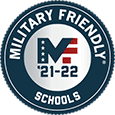Injuries that result from forcible contact or impact between a person and a piece of equipment or object are referred to as struck-by injuries, as defined by OSHA. They are the leading cause of injury and number two cause of death in the construction industry according to the CDC. Struck-by injuries account for nearly a third of all nonfatal construction injuries that result in days away from a worksite.
Table of Contents
Safety in the Construction Industry
These statistics mean safety is incredibly important. Preventing struck-by injuries ensures the health of employees and keeps the worksite running smoothly. Struck-by injuries in construction are caused by four different kinds of objects:
- Rolling: Examples include someone being run over or struck by machinery or equipment that is on the same level as the person.
- Falling: Examples include someone getting crushed or caught under something that has fallen from above.
- Flying: Examples include something that has been thrown or when a piece of material dislodges from a tool and strikes someone.
- Swinging: An example would be materials that are being lifted, swing and strike someone.
How to Prevent Struck-by Injuries in Construction
Preventative measures that ensure safety on a worksite are called control measures. Here are eight control measures that can help prevent struck-by injuries in construction and ensure a safer working environment.
1. Establish Safety Protocols
All workers should complete safety training before starting the job. In the training, safety protocols that every employee must abide by will be laid out. These can include:
- Make eye contact with operators of heavy machinery before approaching so both parties are aware they have been seen
- Store heavy objects close to the floor
- Tools and other materials should not be thrown to each other – especially in elevated locations
- Do not work under machines lifting loads
- Keep away from suspended loads
- Have a clean work area
- Take breaks to avoid fatigue and dehydration
These safety protocols can be reviewed in regular safety meetings. Any new workers on a site should always be briefed on the site’s safety protocols.
2. Always Train & Inspect
Anyone who is operating heavy machinery should be fully trained and certified to do so. A worker should only operate a machine they are trained to use.
Additionally, all tools and machinery should be inspected before use. For tools, check that they are not splintering, or have loose parts or cracks. OSHA requires standard safety devices on machinery that should always be checked during inspection to ensure they are functional. Proper maintenance of tools and machinery can help prevent accidents.
3. Wear Personal Protective Equipment
All workers on every site should wear personal protective equipment (PPE) to ensure their safety while working. PPE should include:
- Head Protection
Hardhats should be worn and regularly inspected for cracks or signs of age. - Vision Protection
Eyewear such as goggles, face shields, and safety glasses should be worn to protect eyes from flying objects and debris. - Hearing Protection
Use earplugs or earmuffs when operating loud machines. - Feet/Toe Protection
Steel-toe shoes should always be worn in case of falling objects.
4. Limit Access to Work Areas
Only workers who have been properly trained should have access to the work area. Anyone who is not essential to the task at hand should not be in the work area. Anyone who is not briefed and aware of the dangers should not be allowed to access the site.
5. Don’t Overload Machines
Don’t exceed the weight or lifting capacity of your machine, since that can result in a load falling and injuring someone. You always want to have visibility, so be careful to avoid overloading the equipment to the point where you cannot see while operating.
6. Use Safety Alarms
Staying vigilant and alert to surroundings is important when operating heavy machinery. Use a reverse alarm when backing up and make sure others in the worksite can hear the alarm. Inspecting the safety alarms on tools and machinery should be part of the standard inspection process before use.
7. Have Additional Safety Measures
Having additional safety measures in place can help prevent falling objects on a worksite. Having debris nets, screens, toeboards, and guardrails can prevent falls on elevated job sites. Any areas below elevated sites should be barricaded off.
For sites that are on a street or a high-traffic area, there should always be signs and barricades to alert the public of the construction and keep workers visible. When working at night, having lights and wearing reflective vests is a must so pedestrians and drivers alike can see workers.
8. Secure Tools and Machinery
When on an elevated worksite, tools and machinery should be secure to prevent drops and falls. When at an elevated worksite, materials should be stacked and secure to prevent gusts of wind from blowing them away.
All tools and machinery, especially those with moving parts, should be properly stored when they are not in use. Tools and materials should be kept away from openings in the floor or workspace so they cannot fall. For vehicles, secure the parking brake when not in use and if the vehicle is on an incline, make sure the wheels are chocked.
A Properly Trained Workforce Makes the Difference
Ensuring proper safety measures are taken can help prevent injuries and delays on the job. All workers and employers should take safety seriously, which is why it is imperative that heavy equipment training be done right.
Build Your Career at HEC
Take your heavy equipment training seriously by enrolling in one of HEC’s programs around the country. When you’re ready to launch the next phase of your career in heavy equipment operation, find the program that’s right for you at one of these four locations.
- Georgia
- Oklahoma
- California
- Washington*
HEC offers accelerated programs to get you working in your new career quickly. Find more information about programs online or call 888-414-0285 to invest in your future today.
*This location is part of the DoD SkillBridge program which offers opportunities to Service members and veterans to learn valuable civilian work experience.




